I am a new programmer for Assembly on Winx64. I'm attempting to set up code that divides the values of one array in the values of another using the basic arithmetic from Assembly programming. The lab I couldn't finish is this:
Here is the code I tried to implement (which was placed in the Hyper-V Virtual Machine, sorry for any poor indentation I end up having):
TITLE DISPLAY
.MODEL SMALL
.386
.STACK
.DATA
S EQU 12 ;size of arrays
X BYTE 4, 16, 100, -116, -68, -104, 125, 60, 99, 33, 55, 77
Y BYTE 2, 3, 4, -5, -6, -7, -8, -9, -10, 11, 12, 13
Q BYTE 0, 0, 0, 0, 0, 0, 0, 0, 0, 0, 0, 0 ;quotient = X/Y
R BYTE 0, 0, 0, 0, 0, 0, 0, 0, 0, 0, 0, 0 ;remainder = X/Y
;Address of X is _______:_______
;Address of Y is _______:_______
;Address of Q is _______:_______
;Address of R is _______:_______
.CODE
MAIN PROC FAR
.STARTUP
;Program
MOV ESI, 0 ;use ESI and index to arrays
MOV CX, S ;counter for loop
L1: MOV AX, 0 ;clear the AX register
MOV AL, [X+ESI] ;load dividend
MOV BL, [Y+ESI]
MOV DX, 0 ;clear the DX register
IDIV AX ;divide X by Y
MOV [Q+ESI], EAX ;store quotient in Q
INC ESI ;increment index by 1
LOOP L1
.EXIT
MAIN ENDP
END
The first issue I'm having is that Line 29 has Error A2070: Invalid Instruction Operands. The second issue is that I'm not sure whether the entirety of the code is correct along with the error. I believe I am able to find the values of X and Y (not Q and R particularly) in the memory of the debugger, but I'm having trouble assembling this code first.
Here is also an Excel except with the expected values for Q and R.

